
New from Nichia, flat leds no bigger than the die, E17A is 1.7x1.7mm, E21A is 2.1x2.1mm. The E21A is rated for up to 1400mA continuously/2000 mA peak. The thermal resistance seems unrealistically low: 0.3 deg/W for the E21A. Claim is 'highest flux density in the industry', sounds like what we want to hear :-) Big drawback for us flashoholics: a two-pad solder lay-out, no thermal pad. But I can see 4 E21A leds soldered to a XM-Noctigon happening, or even better, four E17A's soldered to a XP-Noctigon. My conclusion sofar: great leds, but perhaps not for the majority of us, requires some skills, but then...
Update April 19th:
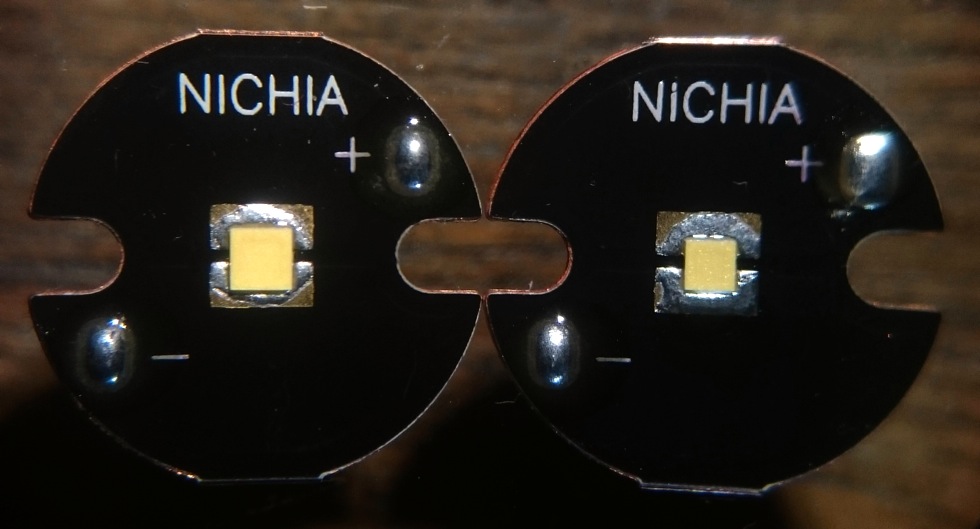
I tested two of these, one E17A 5000K 80+CRI (NCSWE17AT) and one E21A 5000K 80+CRI (NVSWE21AT) for output and voltage. Because these leds have the two-pad solder lay-out, I tested them on the only suitable boards available to me that can be easily used in flashlights: my own 119-boards that I had made by Kerui electronics: 1mm thick copper core, non-DTP, the solder-pads widening into a large pour under the solder mask (see my signature line for a thread on these boards).
Here is a size comparison to other well-known leds without dome: left the E17A, middle top a Cree XP-L HI, middle bottom a dedomed XP-G2, right the E21A.
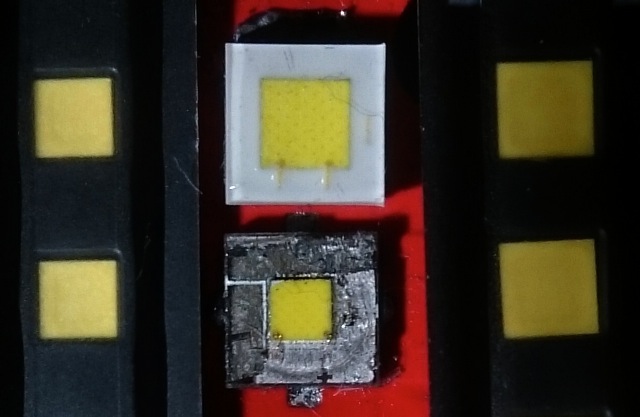
It looks like the E21A has a similar die size as a XP-L Hi, and the E17A is slightly larger than a dedomed XP-G2, but if you have a look (picture below, at 0.5mA current) at the light emitting area of the E17A (the E21A shows a similar picture) you will see that despite the looks the led is not a bare die, the actual die is considerably smaller than the total led surface, while the two shown Cree dies are evenly bright up to the edge.
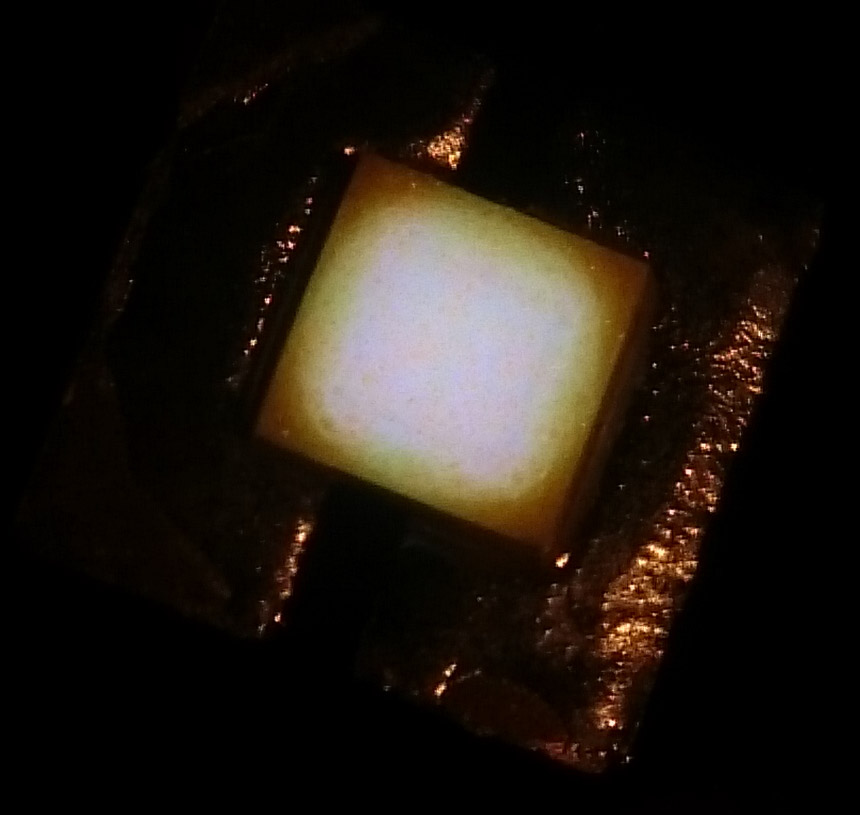
So the emitting area of the E17A is similar or even a bit smaller than a dedomed XP-G2. So at equal output the E17A will have better throw. Here is the led after the test with the phosfor scraped off, the actual die is about 1mm x 1mm (and badly damaged and cracked in the middle from the test ![]() )
)
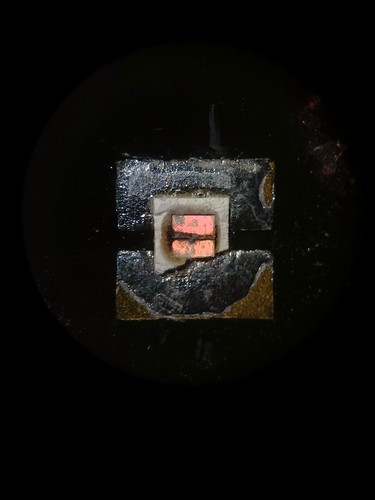
Let's move further to the output tests.
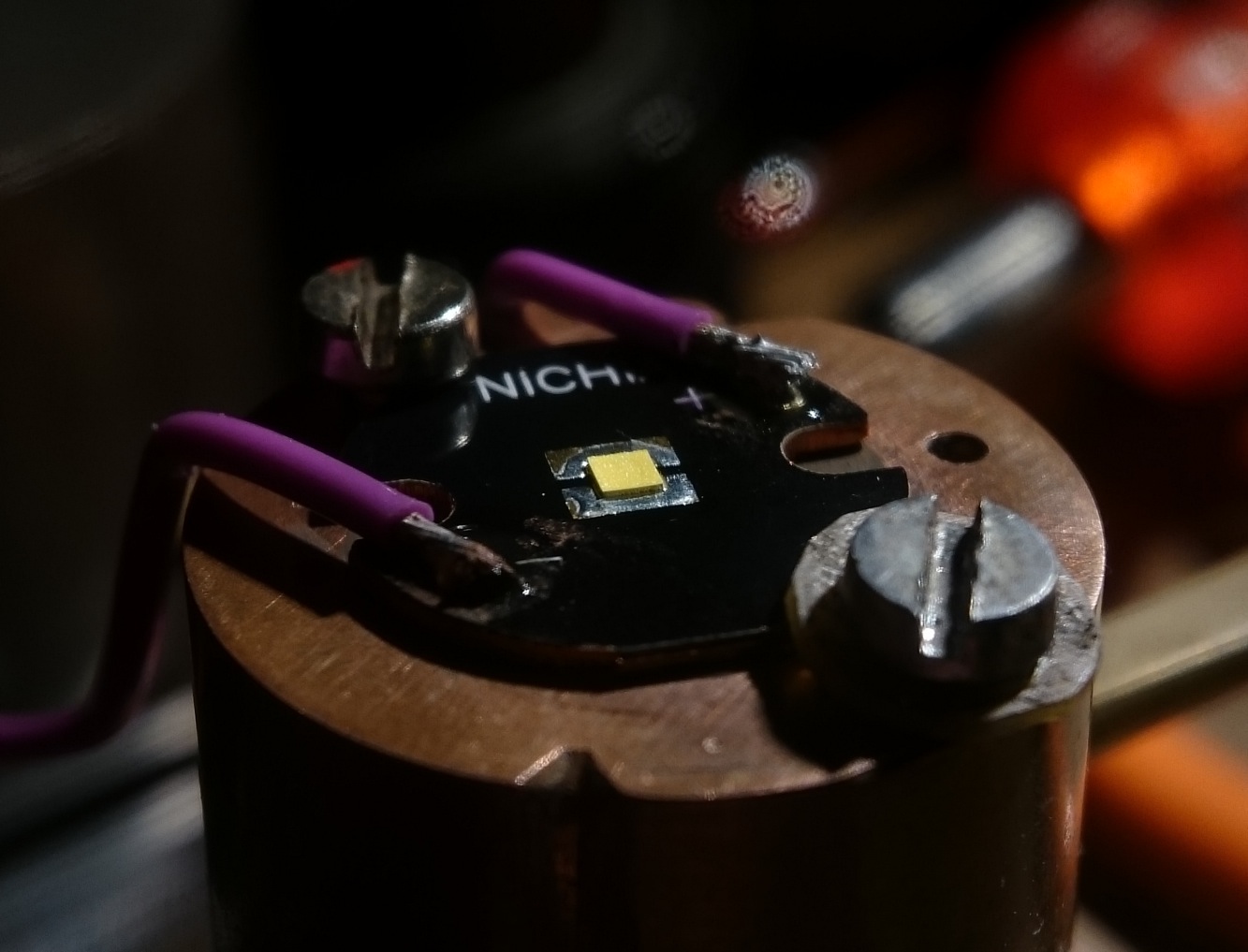
The output test was done like all my more recent emitter tests. I described it in detail in my XP-L test. , with two minor differences that should not matter significantly for the results: I used my Integrating sphere no. II instead of no. I, and for the current I used a clamp meter, which appears to measure 0.1A lower than the power supply current-reading that I used before.
In summary: 1) just one led was tested of each type, reflowed on my non-DTP copper board 2) I used my large version II integrating sphere with high quality luxmeter, 3) the output numbers and voltages were measured with the led close to 'steady state' for each current, so warmed up and settled, you should be able to get these numbers in a well heatsinked flashlight. Mind that these are output numbers of the bare led, in a flashlight there will be losses from light obstructions, lens and optic, 4) output is in 'djozz-lumen' defined as 1/550 of the output of my Sunwayman D40A on high setting, which I hope is close to the real lumen, but at least is consistent over all my emitter tests done in integrating spheres.
The newly obained output data were plotted together with earlier obtained data from a Nichia 219C 5000K 80+CRI, and a Cree XP-G2 S4 2B, for comparison. The E17A was tested up to where it burned to death (4.6A), the E21A led was tested up to 5A at which point it was not burned yet. Later I found the death current to be around 7A.
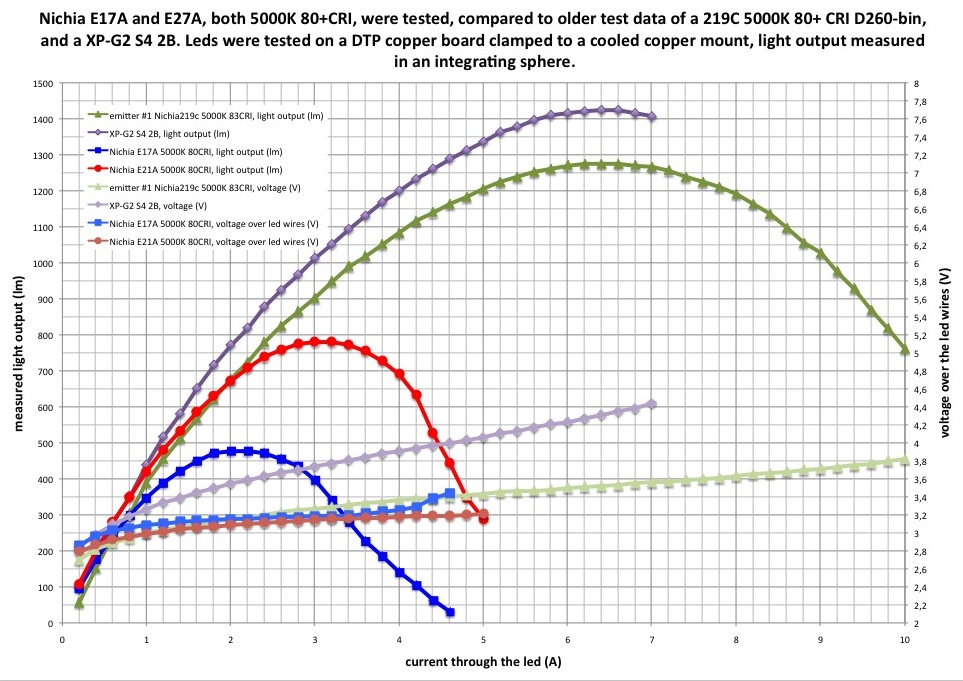
What can be seen:
*at least on these boards these new leds can handle way less current than the 219C of XP-G2. And actually I expect them not to behave much different on a board with better heatsinking like Clemence's upcoming VirEnce boards. That is because my boards with the Nichia 144A leds have proven to handle way more power than in these tests without problem.
*the voltage is nice low, at moderate currents slightly higher than the 219C
*the output and efficiency up to 1A is good, the E21A is on par with the 219C and XP-G2
*I would use the E17A up to 1A, and the E21A up to 2A. This is actually according to the datasheets for these leds, it seems that they can not be overdriven like many other leds.
When these leds finally blow, way above the current with maximum output, it is clear where it goes wrong: in the gap between the solder pads:
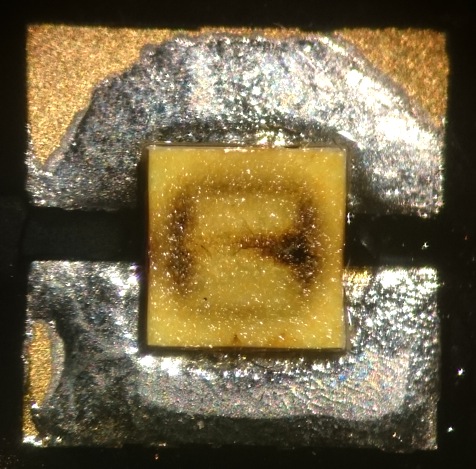
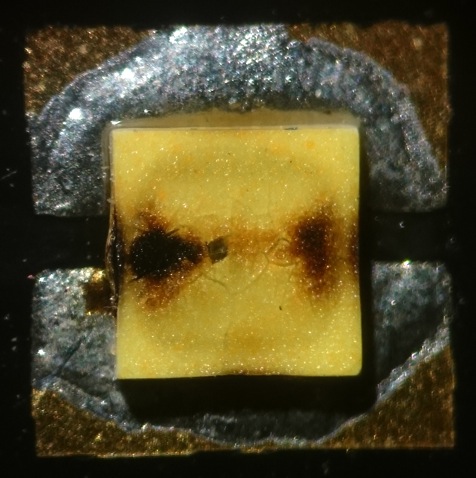
But at reasonable current with close to highest output, I don't think that a bad heat path from the led area above the gap has much influence on the output of the led. I think.
Conclusion.
So these leds are are not:
*great high current high output leds that can compete with high output leds that are around already
*the new throw kings: the dies are small indeed, and they are dome-less, but they lack the output density of dedomed Cree leds and Oslon Black Flat.
But I can see a use for these leds in small lights with moderate current, say AA-lights with a boost driver. I have not tested the beam that they produce but I expect it to be very good. And being Nichia's these leds will be available (through Clemence) in very good tints and CRI, I understand even in R9080 quality.
Thanks for reading!

